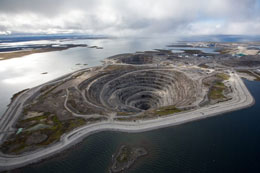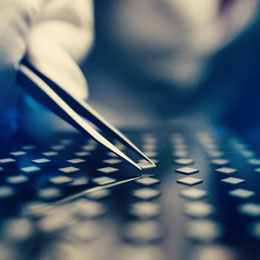De Beers will sell lab-grown diamonds

Graphic from Lightbox website
De Beers recently announced that it will begin selling jewelry with lab-grown diamonds. Starting in September, De Beers will retail directly to the public through its Lightbox website.
The surprise move could be a game-changer for the jewelry industry, for consumers, and for jewelry insurers.
Pricing is the disrupter
For mined diamond, the per-carat price increases with gem size. For example, a ¼-carat stone might be $500, while a 1-carat stone of similar quality could be $3900. This is because, other things being equal, larger stones are more rare than smaller sizes. Color, clarity and cut also affect pricing.
Most manufacturers of lab-made diamonds have followed a similar pricing pattern, though keeping their lab-made stones about 30% below mined diamonds.
De Beers' Lightbox enters the field with a starkly simple pricing model. It will sell its lab-made diamonds for $800/carat, period. A half-carat diamond is $400, quarter-carat is $200, etc. The buyer can choose pink, pale blue or white (colorless) diamond, all for the same price.
So much for carat weight, but what about the other 3 Cs—color, clarity and cut (faceting)? De Beers will not grade the diamonds in the traditional way because, as CEO Bruce Cleaver put it, "We don't think they deserve to be graded. They're all the same."
De Beers implies that these qualities are not important. Yet the 4 Cs affect valuation for lab-made as well as mined diamond, and reliable grading labs like the GIA produce reports for synthetic as well as for mined diamonds.
The lack of gem grading seems to indicate slick marketing. While a buyer may compare the price of Lightbox diamonds to other diamonds of the same carat weight, she will not have information about color, clarity and cut, all of which affect valuation. Some consider non-disclosure of such information deceptive marketing, and deliberate non-disclosure is often a warning sign of poor quality.
Pricing of Lightbox's jewelry settings is also simplified. For every piece in every design Lightbox offers—rings, earrings, pendants—the price will be $100 in silver or $200 in 10-karat gold.
Insurers should note that 10k gold is the lowest karatage jewelry can have and still be considered gold. Pieces of this karatage are generally considered "bridge" jewelry. Fine jewelry is composed of premium, expensive components, produced with attention to detail; costume jewelry is usually mass produced using inexpensive components; bridge jewelry falls in between.
Each Lightbox diamond will carry the brand's logo (visible only under high magnification), so gemologists can identify it as lab-made. But, as we have noted in earlier discussions, a logo etched into the girdle of a stone can be removed.


Photos from Lightbox website
An about-face for De Beers?
De Beers, creator of the slogan "A diamond is forever," is a major force in the world of mined diamonds. It has operated mines from the Arctic to South Africa and has historically controlled the supply of mined diamonds to assure their "rarity" in the marketplace and thus justify their high price.
For some time the company has said that it would never sell lab-made diamonds.
De Beers hasn't changed its primary focus on mined diamonds. It has just added a new product line and massaged its marketing to appeal to Millennials, who are not inclined to spend large sums on jewelry. The lab-grown diamonds from Lightbox are "for lighter moods and lighter moments, like birthdays and beach days."
While most diamond producers are focusing on bridal jewelry, Lightbox addresses "the self-purchasing professional and younger woman," says Sally Morrison, head of marketing for Lightbox. This jewelry is meant to appeal to a woman "who doesn't want the weight and seriousness of a real diamond for everyday life."
Just what is "real" diamond?

Mined from the earth after billions of years?

Grown in a lab in about 3 weeks?

Pressed by a strong hand for a few seconds?
During the past couple of years De Beers has taken part in the "Real Is Rare" advertising campaign, which promoted mined diamonds as the only "real" diamonds.
Element Six, the industrial arm of De Beers, has been producing industrial grade diamond for 50 years. Recently it's been growing gem-grade stones to help De Beers develop the technology to distinguish mined diamond from lab-made. De Beers markets this technology, but its pricing—between $10,000 and $50,000, depending on the device—is far beyond what the typical appraiser can afford.
In any case, the results from the machines are skewed to De Beers' definition of diamond. Its Automated Melee Screener, priced at $45,000, separates out mined diamond and tosses lab-grown diamonds into the "non-diamond" bin, along with imitations like CZ.
De Beers continues to sell mined diamonds in luxury settings under its Forevermark brand, marketing them for important occasions like engagements and anniversaries. "Synthetics are fun and fashionable," said CEO Bruce Cleaver, "but they are not real diamonds in my book. They aren't rare or given at life's great moments. Nor should they be."
Other diamond growers would strongly disagree. Mined and lab-grown diamonds have the same chemical, physical and optical properties. Lab-grown diamonds are sold in quality settings and provide a more affordable alternative to mined diamond. And they come with grading reports from, for example, GIA.
Lightbox pricing severely undercuts other diamond growers. De Beers can, because of its size, absorb losses to an extent that other producers of synthetics cannot. It remains to be seen how this entry into the market will affect pricing and sales of both mined diamond and other synthetics.
It's possible that Lightbox synthetics may increase the value perception of the Forevermark brand, promoting the idea that a diamond with a high price must be better, must be more "real."
Since the Lightbox synthetics are not yet for sale, this is just a heads-up for insurers. We will report more as details become available.
FOR AGENTS AND UNDERWRITERS
Mined and lab-grown diamonds have the same chemical, physical and optical properties. And if Superman got into the game, his could be just as good. Value is determined by quality and, ultimately, by the market.
Although lab-grown diamonds make up only a small percentage of diamond sales, that percentage is growing. Because of the price difference between mined and lab-made stones, it's good practice to always check the appraisal.
A diamond appraisal should explicitly state that the stone is either mined or lab-made. Lab-grown diamond is real diamond, but its valuation is lower than for mined diamond.
Because synthetics can be difficult to detect, it's best to ask for a sales receipt. The selling price is a good indication of value, and the retailer's name may provide useful information.
Some lab-grown diamonds are inscribed with the name of the manufacturer, though some are not. And inscriptions on the gem's girdle can be removed. Deliberate non-disclosure is always possible.
Check the appraisal for all terms signifying lab-made, including synthetic, grown, man-made, lab-made, lab-grown, cultured, and created.
Gem-grading labs have received parcels with lab-grown diamonds mixed in with mined gems. How many lab-made stones have not been "caught" and are out in the marketplace being sold, and priced, as mined diamonds? The potential for overpayment on claims is enormous.
FOR ADJUSTERS
Reputable makers of lab-made diamonds want to associate their names with their products. Recognizing these names, or working with a jewelry expert who does, could save you tens of thousands of dollars on a claim.
There are, of course, disreputable gem-growers, so you cannot assume a gem is mined just because the appraisal doesn't mention synthetic, lab-grown, etc. This is especially important for diamonds of high value.
Disclosure information can get "lost." A customer may buy jewelry with synthetic diamonds, not understanding the meaning of a term like cultured, for example, or not appreciating the large difference in value between mined and grown diamond. When he becomes aware that he made a bad purchase, he may "sell" it to the insurance company through a fraudulent claim.
Jewelry with multiple gems may have mined and lab-grown stones mixed together.
If the appraisal does not explicitly state the gem is mined, use every means possible to determine whether it is mined or lab-grown. Be especially diligent with colored diamonds.
©2000-2025, JCRS Inland Marine Solutions, Inc. All Rights Reserved. www.jcrs.com

